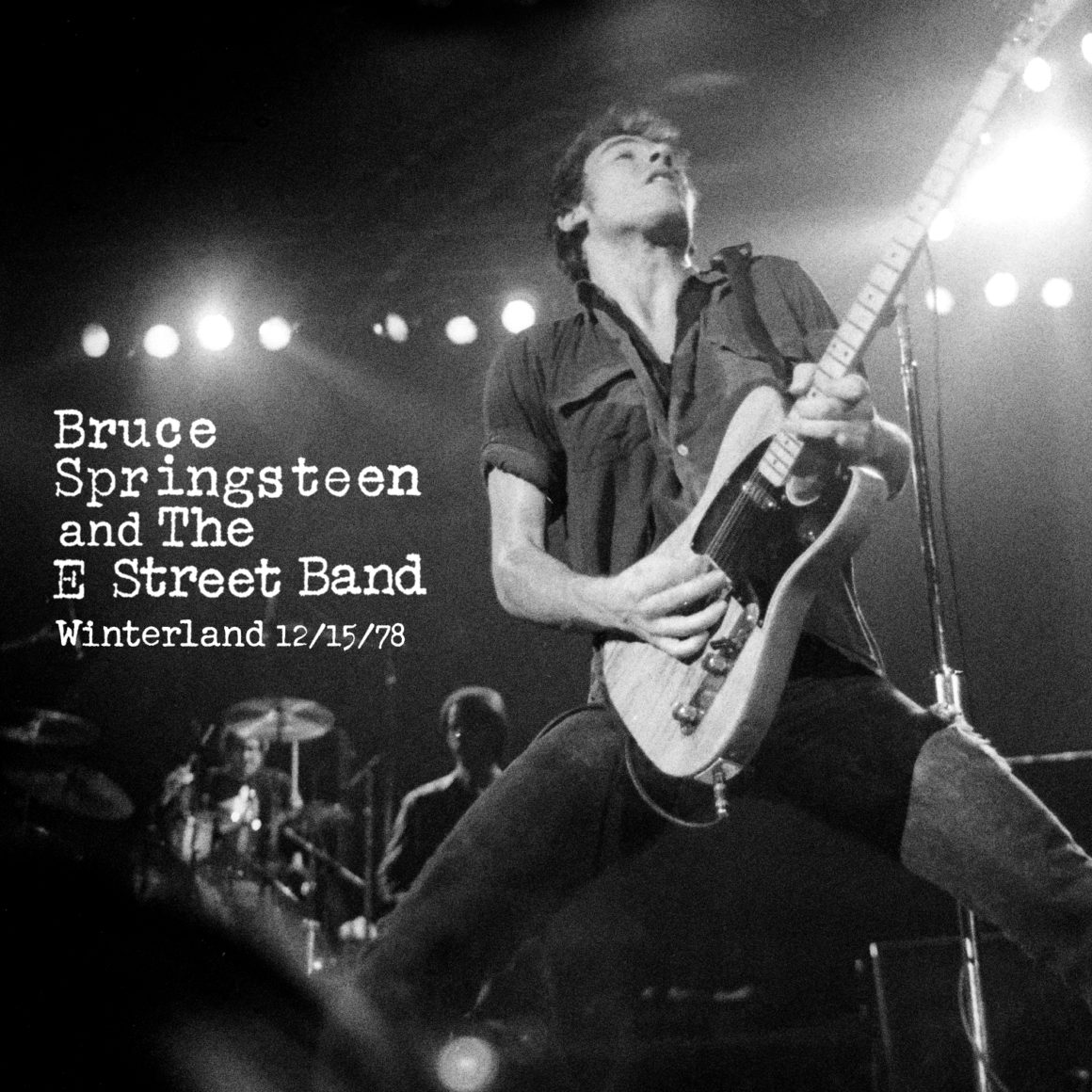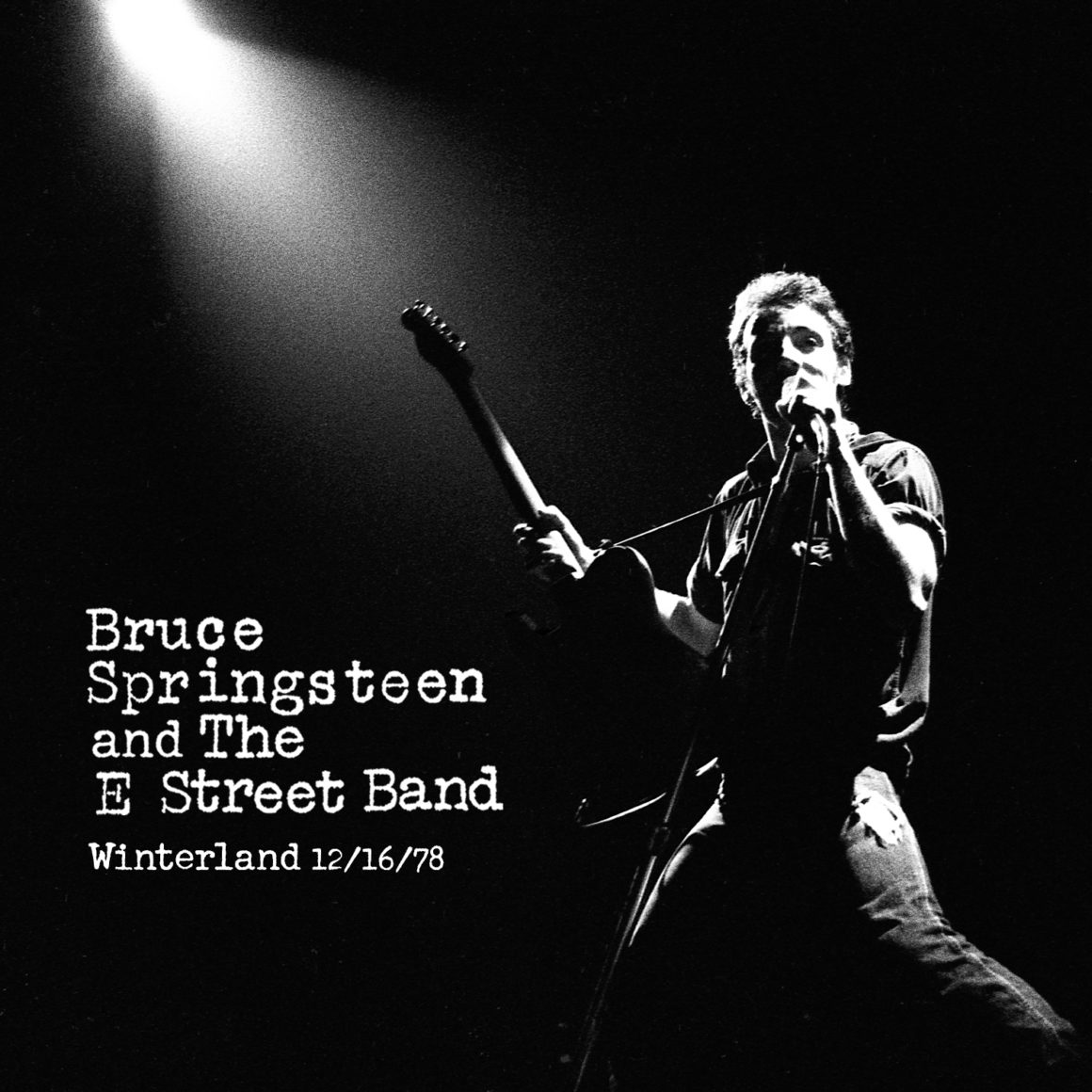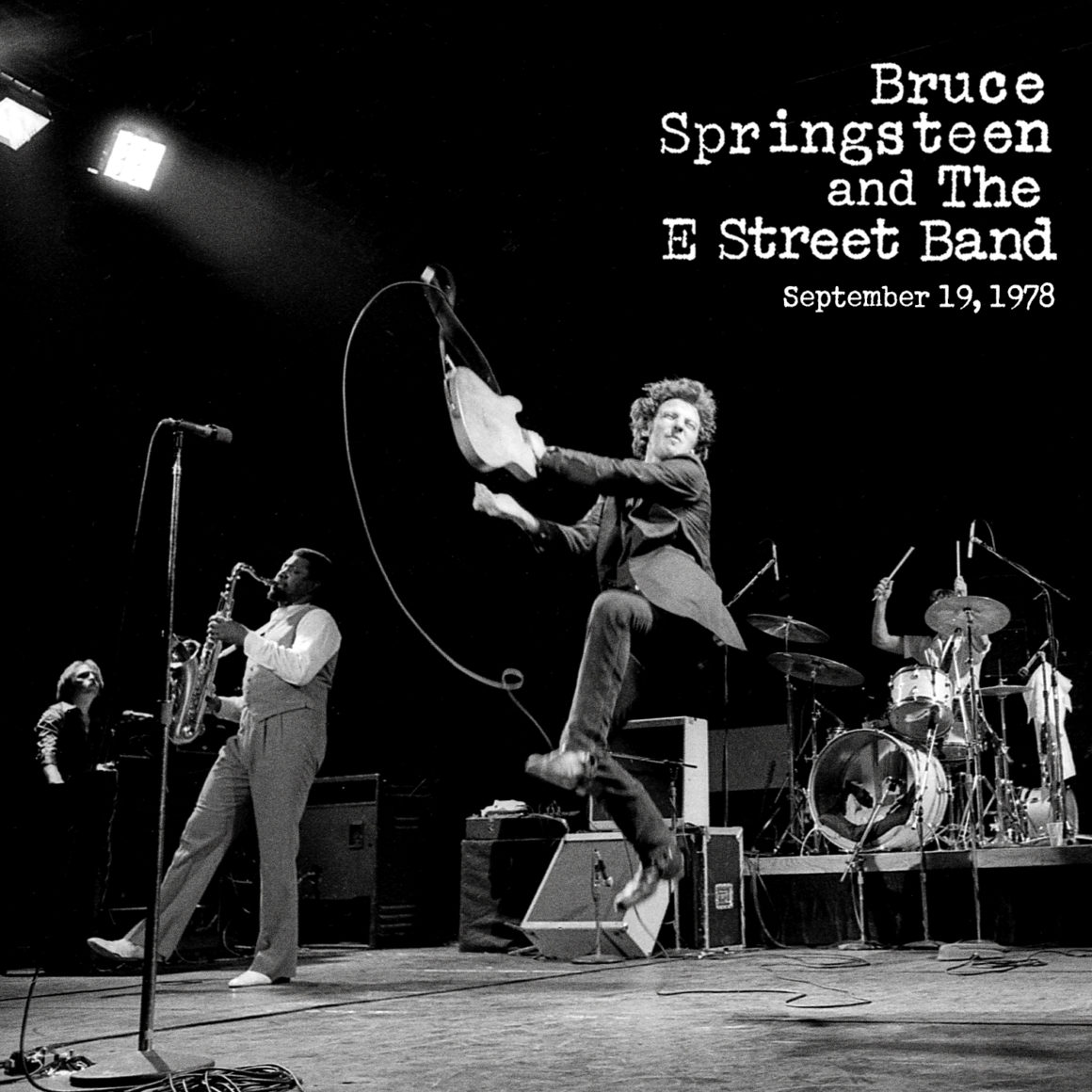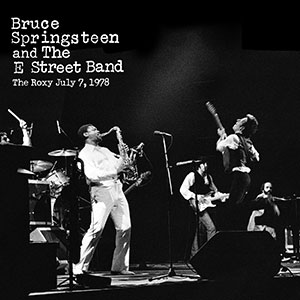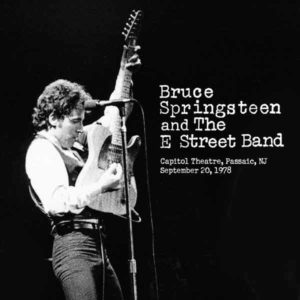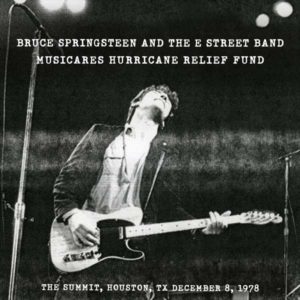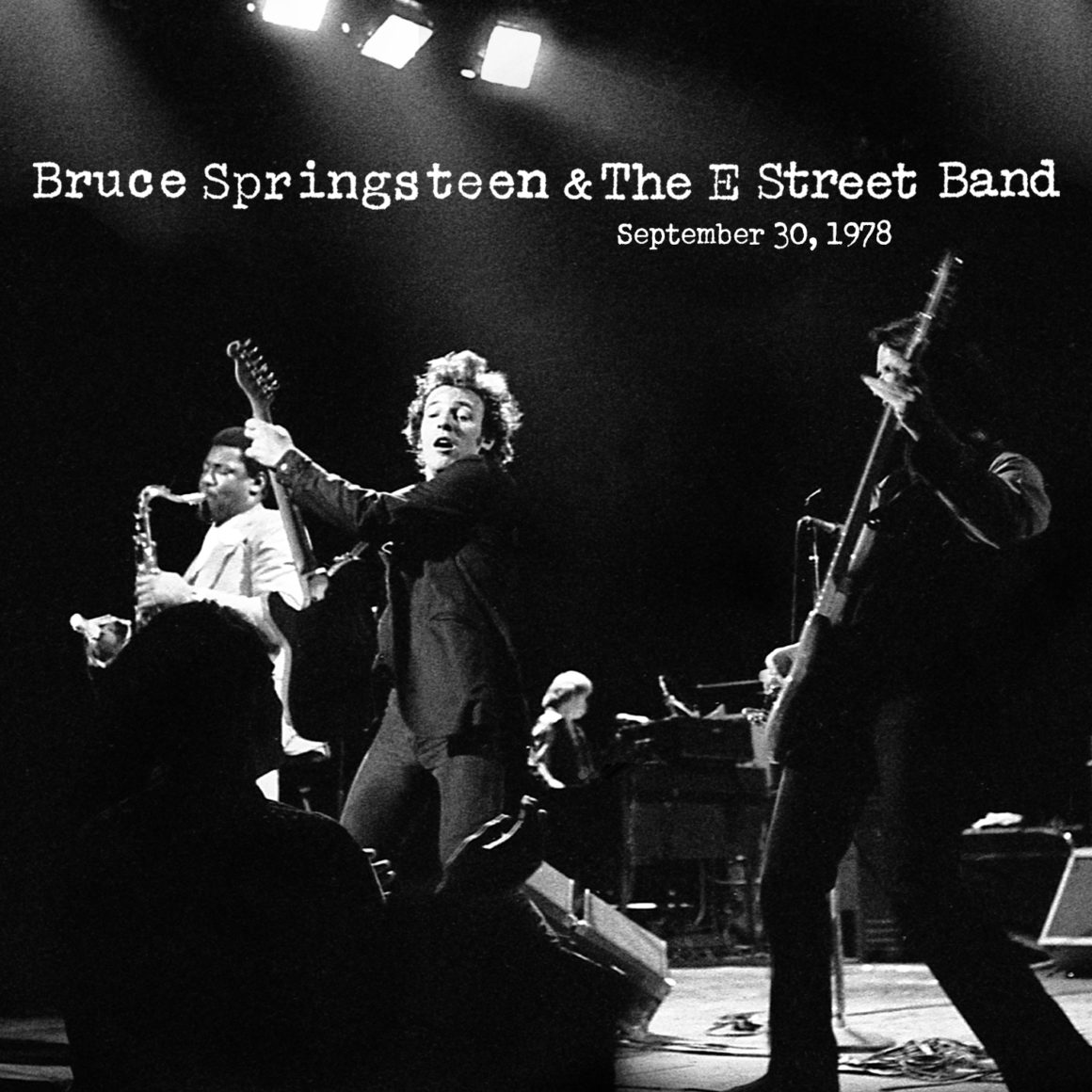
Bruce Springsteen and The E Street Band
Fox Theatre, Atlanta, GA, September 30, 1978
By Erik Flannigan
I’ve written before about the role the Darkness tour radio broadcasts played in the career development of Bruce Springsteen. Broadcast live from the Agora in Cleveland, the Capitol Theatre in Passaic, The Roxy in West Hollywood, and Winterland in San Francisco, those concerts were recorded off air by thousands of people listening at home in 1978. In the years that followed, many wore out their tapes, playing them again and again as the only “official” live Springsteen product until Live/1975-85 was released in 1986.
Through the “magic of bootlegging,” home recordings wound up on illicit vinyl pressings like Piece de Resistance and Live in the Promised Land. Copies of those LPs made their way to Europe, which wasn’t visited by the Darkness tour itself, so overseas fans at least got to hear Springsteen on stage. He and the band wouldn’t return to those shores until 1981; for such Bruce-starved fans, those recordings were manna from heaven.
Without question, the familiarity fans have with the broadcast recordings of shows like The Roxy and Capitol Theatre cemented their status among Bruce’s greatest performances ever. But what if there were another?
It would be an exaggeration to call Atlanta 9/30/78 “the lost broadcast.” But compared to the other four, which were pressed multiple times on vinyl and CD bootlegs, Atlanta is the least familiar, having no meaningful history on bootleg vinyl and a limited one on CD.
The home recording enthusiasts alluded to above were certainly more plentiful in the Tri-State area, for the Passaic broadcast, than in the Southeast for Atlanta. Other broadcasts got wider distribution (the Agora show was syndicated to FM rock stations around the country after the fact) or were simply bigger events to begin with (Bruce’s Roxy appearance was the most buzzed-about show in Los Angeles in 1978). On the other hand, Atlanta and the Southeast were more of a development opportunity for Springsteen that year, and legend has it, stormy weather in the region on 9/30/78 caused reception problems for those who did record.
All of which explains why, as fans traded tapes and bought bootlegs in the ’70s and ’80s, the quality of the Atlanta broadcast, if it could be found at all, was inferior to the other four broadcast recordings, hence its outlier status. But one listen to Jon Altschiller’s new mix from Plangent Processed, 24-track analog master tapes and Atlanta is an outlier no more.
The 9/30/78 set captures the Darkness tour “picked at the peak of freshness,” as the old commercial used to say. It’s like getting a lost episode of Seinfeld, shot but never aired during Season 5. The official release of this Fox Theatre show gives us the chance to fall in love all over again with a spectacular slice of Springsteen ’78.
After a great intro to the stage, the show smashes to a start with “Good Rockin’ Tonight” straight into “Badlands.” Each E Street Band member quickly shows they are in it to win it this night, with first-among-equals Roy Bittan carrying the melodic load with aplomb, as he will throughout the night. “Spirit in the Night” sets the band-fan tenor. “Darkness on the Edge of Town” is flawless, and Bruce sings with total conviction — no more so than on a subtle lyric change, replacing “Where nobody asks any questions or looks too long in your face” with, “You can drive all night, and never make it around.”
Sonically, Atlanta offers crystalline clarity. In the stately “Independence Day,” which Bruce introduces as the “flipside to ‘Adam Raised a Cain’,” the level of instrumental detail — from Danny’s glockenspiel to Max’s hi-hat, Garry’s bass to Stevie’s delicate strumming — is breathtaking and immersive. It pulls you into what just might be your new favorite version of “Independence Day,” a sentiment you are likely to feel across several Atlanta performances. Yes, the audience is mixed just right, too.
The rest of the first set holds to the same gold standard as we move from a faultless “The Promised Land” to a scintillating, extended “Prove It All Night” that’s as good if not better than any version you’ve heard from this tour — and that’s saying something.
The same goes for “Racing in the Street.” Listen for a gorgeous and distinct bit of interplay between Danny and Roy around the 2:05 mark. The first set wraps with the peerless pairing of “Thunder Road” and “Jungleland.” It doesn’t get any better than this.
“Santa Claus is Comin’ to Town” opens the second half of the show in jolly spirits, and because the fake snow that fell needed to be swept up by stagehands, Bruce and the band vamp by paying tribute to one of Atlanta’s adopted sons, James Brown. They play the Godfather of Soul’s “Night Train” so well, one would think the song was in the set every night of the tour. In fact, this is the only performance ever of “Night Train.”
“Fire” extends the frivolity before the tone turns dramatic via “Candy’s Room.” Danny and Roy again weave around each other in stunning fashion in the long intro to “Because the Night,” which includes a superlative guitar solo in yet another “name a better one” version. The second River preview of the night, “Point Blank,” surely sent anticipation soaring for Springsteen’s next album, with Danny and Roy intricately swirling behind the striking original lyrics.
E Street Band vocals in the “Not Fade Away/Gloria” intro to “She’s the One” have never sounded livelier, the guitar licks never more Link Wray than this terrific extended reading, another reminder of how special it is to re-live such a beautifully recorded document of the tour. “Backstreets” provides a tour de force denouement, with the middle section a Van Morrison-inspired, mind-blowing melange of “sad eyes,” “Drive All Night,” “you lied,” and “we’ve got to stop.” Listening to the Atlanta version will reaffirm everything you love about the song, this tour, and these musicians.
Even venerable “Rosalita” gets an intriguing instrumental introduction more than two minutes long. There are so many moments in Atlanta 9/30/78 that are just a little different from the Darkness shows we know best, and it is all the more compelling because of it.
The traditional but no less exceptional Darkness tour encore of “Born to Run,” “Tenth Avenue Freeze-out” and “Detroit Medley” brings us home, and the night ends with one of only eight tour performances of “Raise Your Hand,” far fewer than you’d guess because all five broadcasts are counted among those eight renditions.
With the release of Atlanta, the quintet of 1978 broadcasts in the Live Archive series is now complete, representing not only some of the greatest Bruce Springsteen performances of all time, but arguably the greatest live concert recordings in rock history.
